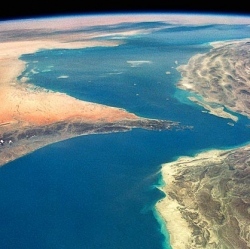
The orbiter was launched on an Atlas V rocket from Florida’s Cape Canaveral Air Force Station at 13:28 local time (18:28 GMT).
Assuming the $671m (£416m) mission stays on track, the probe will have a 10-month cruise to the Red Planet.
Maven is going to study Mars’ high atmosphere, to try to understand the processes that have robbed the world of most of its air.
Evidence suggests the planet was once shrouded in a thick blanket of gases that supported the presence of liquid water at its surface. Today, the air pressure is so low that free water would instantly boil away.
Maven was released from the Atlas V’s upper-stage some 53 minutes after leaving the Cape Canaveral pad. The probe then had to open its solar panels and orientate itself into a cruise configuration.
"During cruise, we perform four planned trajectory correction manoeuvres where we fire thrusters to tweak the trajectory so that we arrive at the right place and time to go into orbit around Mars. At that point, we will fire a set of thrusters to slow down the spacecraft and get captured into orbit," explained Guy Beutelschies, the spacecraft’s programme manager at manufacturer Lockheed Martin.
The present-day atmosphere of Mars, composed mostly of carbon dioxide, is extremely thin, with atmospheric pressure at the surface just 0.6% of the Earth’s surface pressure.
The Martian landscape, though, retains channels that were evidently cut by abundant, flowing water – proof that the planet had a much denser atmosphere in the past.
